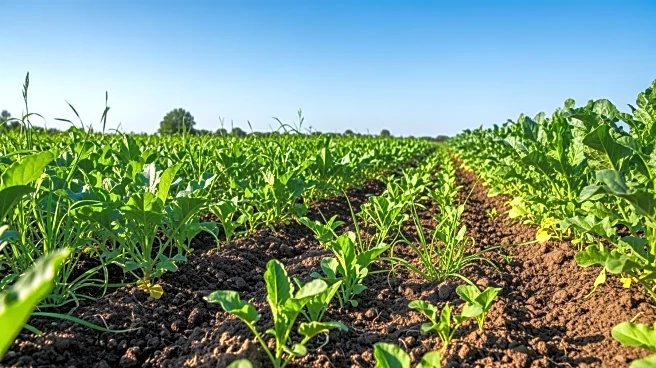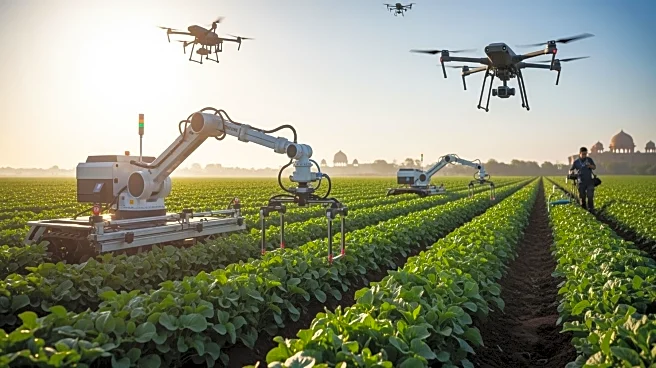What's Happening?
Regenerative agriculture is receiving increased attention due to its potential benefits for soil health and environmental sustainability. This farming method, which has been practiced by Indigenous peoples
for centuries, involves techniques such as crop rotations, multispecies cover-crop mixes, and rotational grazing of perennial forages. These practices enhance the organic matter in the soil, which is crucial for plant growth, in a relatively short period. By improving soil health, regenerative agriculture reduces the need for chemical inputs, increases carbon sequestration, and decreases water pollution. The renewed interest in these methods is partly due to recent findings about the soil biome, highlighting the importance of biodiversity both above and below ground.
Why It's Important?
The significance of regenerative agriculture lies in its potential to transform farming practices and contribute to environmental conservation. By reducing reliance on chemical fertilizers and pesticides, it offers a sustainable alternative that can mitigate pollution and enhance soil fertility. This approach not only benefits farmers by lowering input costs but also supports broader environmental goals such as carbon sequestration and water quality improvement. As the agricultural industry faces challenges related to climate change and resource depletion, regenerative practices offer a viable path forward, potentially influencing policy and market trends in the U.S. agricultural sector.
What's Next?
The growing interest in regenerative agriculture may lead to increased adoption of these practices among farmers, supported by potential policy incentives and market demand for sustainably produced goods. Stakeholders, including agricultural organizations and environmental groups, may advocate for further research and investment in regenerative techniques. Additionally, there could be a push for educational programs to train farmers in these methods, fostering a shift towards more sustainable agricultural systems. As awareness grows, consumers may also drive demand for products produced using regenerative practices, influencing market dynamics.
Beyond the Headlines
Regenerative agriculture not only addresses environmental concerns but also has cultural and ethical dimensions. By aligning modern farming practices with traditional Indigenous methods, it acknowledges and respects the knowledge of Indigenous communities. This approach can foster collaboration and knowledge exchange between different cultural groups, promoting inclusivity in the agricultural sector. Furthermore, the ethical implications of reducing chemical use and enhancing biodiversity resonate with growing consumer preferences for environmentally responsible products.











